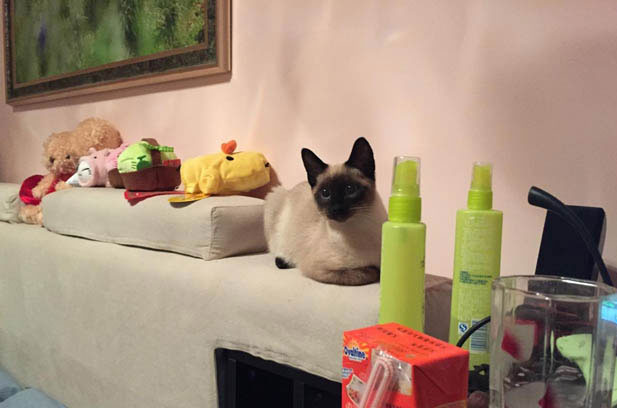In the realm of cat ownership, one truth reigns supreme: every cat is a law unto themselves. Whether you’re cradling a Ragdoll’s luxurious fur or dodging a Siamese’s playful swats, the bond you share transcends breed labels. As someone who’s navigated the quirks of both worlds, I’ve learned that the key to feline happiness lies not in adhering to stereotypes, but in embracing the unique personality of your chosen companion—flaws, furballs, and all.
Breed Stereotypes vs. Reality: A Humorous Dive
Let’s start with the Ragdoll, often hailed as the “ultimate lap cat.” My friend’s Ragdoll, Mr. Whiskers, does indeed go limp when cradled like a baby—a comical trait that earned him the nickname “the paralytic prince.” But this docility has its limits. Attempt to trim his nails, and he transforms into a tiny furry Houdini, squirming with the agility of a cat half his size. Bath time? A dramatic production involving clawed escapes and mournful yowls that echo through the house. It’s a stark reminder that even the most “laid-back” breeds have their boundaries.

Then there’s the Siamese, stereotyped as the hyperactive “cat-dog.” My neighbor’s Siamese, Zephyr, lives up to the energy but defies the mold in other ways. While he’ll chase a laser pointer until his humans collapse, he’s also prone to sudden bouts of melancholy, staring out the window with the intensity of a poetic soul. “He’s not just a cat; he’s a drama in fur,” my neighbor laughs, describing his habit of knocking over water glasses only when she’s on an important work call.
Intelligence (or Lack Thereof): A Matter of Perspective
The claim that Ragdolls are “less trainable” amuses me. Mr. Whiskers may ignore commands, but he’s mastered the art of manipulation. He’ll sit politely by his food bowl, gazing up with eyes so soulful they could melt steel—until his human caves and offers a treat. Is this stupidity or genius? Similarly, Zephyr’s “obedience” consists of selectively ignoring commands, only responding when treats are involved. Cats, it seems, have their own definition of “training”—one that revolves around human compliance.
The Great Fur Debate: A Love-Hate Relationship
Ragdoll fur is a double-edged sword. Mr. Whiskers’ coat is a cloud of perfection… until he uses the litter box. The sight of him emerging with fur coated in unmentionables is a daily reminder that beauty comes with a price. Enter the robot vacuum, a Ragdoll owner’s unsung hero. Without it, their homes would resemble furry tundras, with tumbleweeds of fur rolling across the floors.
Siamese, with their short coats, are comparatively low-maintenance. Zephyr’s sleek fur rarely causes chaos, though his habit of shedding directly into his human’s coffee mug is a unique talent. “I’ve accepted that every sip comes with a side of love… and fur,” my neighbor sighs, scraping a stray hair from her cup.
Tummies and Trust: Navigating Health Myths
The “glass stomach” reputation of Ragdolls is a mixed bag. Mr. Whiskers thrives on a strict diet of premium kibble, while a friend’s Ragdoll from a different breeder turns into a digestive disaster with the slightest menu change. This inconsistency highlights a crucial point: genetics play a role, but so does individual resilience. For both breeds, the golden rule applies: avoid sudden diet changes, monitor treats, and always keep probiotics on hand.
The Heart Over Breed Philosophy
At the end of the day, the most important factor in cat ownership is connection. Mr. Whiskers may hide under the bed during parties, but he’ll curl up with his human every night, purring like a tiny engine. Zephyr may knock over vases, but he also greets his human at the door with chirps of joy, turning mundane returns into celebrated events. These moments of vulnerability and affection are what make the “hard work” of cat ownership worthwhile.
A Call to Embrace the Chaos
To the skeptical observer, all cats may seem the same. But to those who share their lives with these creatures, every purr, hiss, and playful swat tells a story. Whether your cat is a Ragdoll who tolerates hugs but rebels against grooming, or a Siamese who turns your home into a circus, the journey is defined by patience, humor, and unconditional love.
So, choose a cat that speaks to your heart—breed standards be damned. Embrace the fur, the chaos, and the moments of pure, unadulterated feline weirdness. After all, life with a cat isn’t about meeting expectations; it’s about celebrating the unique, unpredictable soul who deigns to share your space. As Mr. Whiskers and Zephyr remind us: cats may not care about breed stereotypes, but they care deeply about being loved for exactly who they are.
Leave a Reply